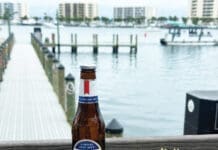By Kay Leaman, Health Architect
Do you know what the two most toxic plastics are that can be found in most kitchens today? Wait for it… plastic wrap and silverware.
How many plastic storage containers do you have and how many of them come from restaurant leftovers, the deli or the 24 container box deals?
One of the most toxic products we come in contact with is styrofoam. In one study, eggs that were stored in a styrofoam container were tested. After several hours they found that the chemicals from the styrofoam had leached through the shell into the egg.
Now, back to plastic.
Many of us are familiar with the term BPA-free and even though this is a good thing it does not mean that it is healthy or safe. Here are some lingering dangers of plastics:
Dioxin production: Direct exposure to the sun. Such heating (including microwave) releases a toxin called dioxin, which, when consumed, can accelerate breast cancer.
BPA generation: Biphenyl A is an oestrogen-mimicking chemical that can lead to a lot of health problems like diabetes, obesity, fertility problems, behavioural problems and early puberty in girls. It’s better not to store and drink water from a plastic bottle.
Impact immune system: Our immune system is immensely affected when we drink water in plastic bottles. The chemicals from plastic bottles are ingested and tend to disturb our body’s immune system.
Liver cancer and reduced sperm count: Because of the presence of a chemical called phthalates in plastic, drinking water from plastic bottles can also lead to liver cancer and a reduction in sperm count.
A recent study done by the State University of New York in Fredonia shows that there are excessive levels of microplastics in bottled water, especially in popular brands. Microplastics are small plastic debris pieces measuring 5 millimetres or smaller. Microplastic is found in over 93 percent of bottled water and while The World Health Organization says that there is no evidence consumption of microplastics affects your health, it is still an area of concern.
Here is a mini guide to plastic bottles and other plastics. The numbers refer to the number in the triangle on the bottom of the container.
1 – PETE or PET (polyethylene terephthalate)
2 – HDPE (high density polyethylene)
3 – V (vinyl) or PVC
4 – LDPE (low density polyethylene)
5 – PP (polypropylene)
6 – PS (polystyrene)
7 – Other or miscellaneous
The safest numbers are 1, 2, 4, or 5. Number 3 is the worst followed by 7. As a rule of thumb, the softer the plastic the more likely than leaching will occur.
So, what can we do? Begin by replacing water bottles with a stainless steel water bottle. When plastic bottles are a necessity (a long road trip or a day on the boat) ensure the bottles stay cool and out of the sun. If you’re on a trip, bring the water into your hotel room for the night and never leave a water bottle in your vehicle.
For the kitchen, begin replacing food storage containers with glass. When using plastic wrap, either place parchment paper under the plastic wrap or ensure the wrap does not touch any food. Finally, NEVER heat food in the microwave in a plastic container or plastic wrap.
Here’s to health.
Kay Leaman
Health Architect
HealthyDay HealthyLife
succeed.hdhl@gmail.com





























































